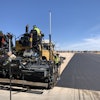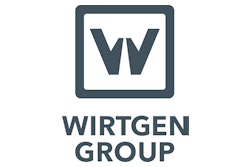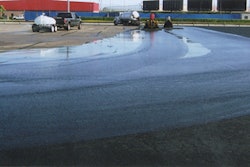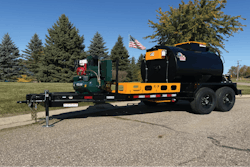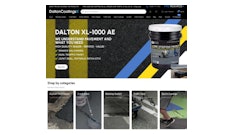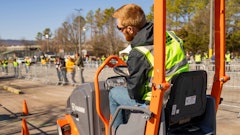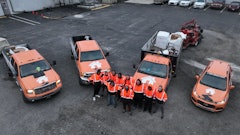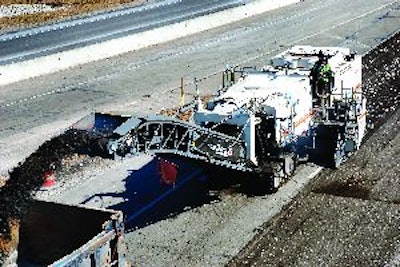
An armada of Wirtgen cold mills launched the first real work on the massive Super 70 reconstruction of I-70 east of downtown Indianapolis, taking out 65,000 tons of asphalt in three days.
Contractor Mid America Milling Co., Jeffersonville, IN, better known as MAMCO, fielded eight Wirtgen mills, including two W 2200s with full-lane 12-foot 6-inch drums, a W 2200 and two W 2000s with 7-foot 2-inch drums, and two W 1200 Fs.
MAMCO milled 65,000 tons of hot mix asphalt overlays, shoulders and base courses over the 6.1-mile project in just three days this past spring, in advance of complete reconstruction of the urban expressway in one season. The millings were being received by 75 trucks from one end of the project to the other.
One of the smaller W 1200 Fs - now replaced in the Wirtgen lineup by the new W 120 F - was being used to cut 11 inches deep of 4-foot-wide asphalt shoulder along the center barrier.
"We have to be done by Saturday night and have only three days to do it," says Charles Becht, superintendent for MAMCO. "These Wirtgens increase our productivity tonnage-wise, especially when we find the asphalt is deeper than the DOT thought it was."
"We're taking all the asphalt down to the existing concrete," says Dave Money, milling supervisor for MAMCO. "Other teams are taking the shoulder out down to the dirt subgrade. We're taking out 65,000 tons in three days, with unlimited hours. We don't care how long we have to work; we have two 12-footers, four 7-footers, and two 4-footers out here and these machines will get it all done."
The lack of traffic and interruptions, and abundance of trucks, enabled the largest Wirtgen mills all the elbow room they needed to mill at prodigious production rates. For example, Money's W 2200 was filling 20-ton triaxle haul trucks in average of every 33 seconds, but there were plenty of trucks to keep the project going.
I-70 was completed in the early 1970s and had never been rebuilt. The stretch of I-70 from the I-465 east leg to downtown is one of the most heavily traveled roadways in Indiana, carrying nearly 180,000 vehicles per day.
Pavement and bridge decks were deteriorating, inside shoulders were functionally obsolete, curve sightlines were deficient, and vertical clearance at many of the bridges was too low.
Understanding the impact of prolonged construction on the massive traffic volumes affected, Indiana DOT decided to reconstruct the freeway mostly in the 2007 construction season. Prime contractor is Walsh Construction Inc.
"The cost to continue patching it from year to year just to make it safe enough for traffic is too great. It's time to start from the subgrade up," says Indiana DOT commissioner Thomas Sharp late last year.
"We're going to eliminate this corridor's deficiencies in one construction season," Sharp said in 2006. "It's an aggressive schedule, and we're committed to staying on time. We know there will be some disruption with the ramps closed, but it's the safest, quickest way to rebuild the highway."
Work in 2007 involved closure and demolition of the existing concrete and asphalt overlays in the westbound travel lanes of I-70 beginning in February, and lasting through July. Then, work would shift to the eastbound lanes July through November. March through June 2008 would see a wrap-up of the project, with no major lane restrictions. MAMCO repeated the cold milling process - this time for eastbound I-70 - beginning in mid-July.
The project includes the replacement of 75 lane miles of pavement, including travel lanes, outside shoulders, and inside shoulders widened from 7 to 14 feet; replacement of 28 bridge decks; the widening of inside shoulders; plus new signs, lighting, striping and other appurtenances.



